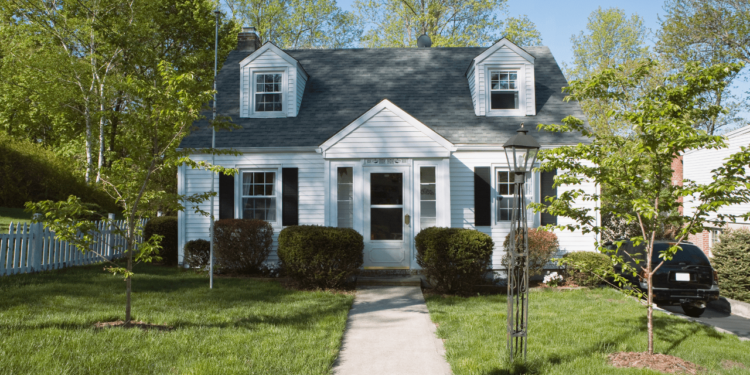The term “middle class” goes all the way back to 1745.
In more recent history, it’s been a way to describe those able to afford American comfort – people existing between the working and upper classes, neither struggling with, nor flush with money, but able to afford luxuries such as the occasional vacation and eating out at restaurants.
In 2009, The Economist characterized the middle class as:
having a reasonable amount of discretionary income and defined it as beginning at the point where people have roughly a third of their income left for discretionary spending after paying for basic food and shelter.
At one point, it was thought that over half the world’s population existed here, but in the US especially, those numbers are changing.
According to 2024 research from the Pew Research Center, the percentage of Americans in the middle class has dropped from 61% in 1971 to 51% in 2023.
It seems like everyone claims to be “middle class,” from families living paycheck to paycheck to those earning six figures. But what does the term really mean in 2025?
Let’s break down the numbers and help you figure out where you actually stand.

The Numbers Game: Defining Middle Class
Surprisingly, there’s no single, official definition. Instead, economists and researchers use different measures to define this broad category.
Most experts consider middle class to be households earning between two-thirds and double the median U.S. income. For 2024, that means earnings between $45,000 and $135,000 for a family. However, these numbers shift dramatically based on where you live, and income is just one piece of a complex puzzle.
Location, Location, Location
Being middle class in San Francisco looks very different from being middle class in rural Kansas.
In major metropolitan areas, a family might need $120,000 or more to maintain the lifestyle. The high cost of housing alone can consume a significant portion of income, not to mention expensive childcare, transportation, and daily living expenses.
In contrast, rural areas offer a different financial landscape.
A family earning $65,000 might be solidly middle class because housing costs are lower, transportation expenses are reduced, and everyday expenses from groceries to childcare tend to be more affordable.
This dramatic difference in living costs points to this class status being deeply tied to geography.
Beyond Income: The Middle Class Lifestyle
It isn’t just about your paycheck – it’s about financial stability and quality of life.
A middle class household typically has the ability to:
- save some money each month
- maintain an emergency fund
- access healthcare
They can usually afford stable housing, whether owned or rented, and reliable transportation. Perhaps most importantly, they have some capacity to invest in their future through education, retirement savings, or other long-term goals.
How Retirement Works | Things We Wish We Learned in School
The Modern Middle Class Reality
Today’s middle class faces challenges that previous generations didn’t encounter.
Housing prices have outpaced income growth in many areas, making homeownership – traditionally a hallmark of this status – increasingly difficult to achieve.
Healthcare costs continue to rise, and the expense of education, from preschool through college, has skyrocketed.
The modern class also deals with new expectations. Continuous education and skill updating are often necessary to maintain career relevance. Technology requirements add new expenses to household budgets.
Many families find they need multiple income streams to maintain their standard of living.
Signs of Middle Class Status
Financial security tells us more about this status than income alone.
If you can:
- pay your bills but need to budget carefully
- have some savings but worry about major expenses
- can afford occasional luxuries but need to plan for them
…you’re likely in the middle class range.
Having manageable debt, rather than no debt or overwhelming debt, is another common marker.
The Regional Factor
Your middle class status heavily depends on where you live.
An annual income of $75,000 could make you upper middle class in Mississippi, but barely working class in New York City. This vast difference in purchasing power means that national income statistics often fail to tell the whole story of middle class life in America.
Calculating Your Status
Determining if you’re middle class involves more than just looking at your paycheck.
Consider your household size – single individuals have different thresholds than families, and each additional family member changes the calculation. Look at your area’s median income and compare local housing costs to your income.
Most importantly, evaluate your financial security:
- Can you save money?
- Handle emergencies?
- Plan for the future?
Maintaining Your Middle Class Status
Staying in or moving up requires strategic planning.
- Focus on building financial security through emergency savings and debt management.
- Invest in yourself through continued education and skill development.
- Make smart choices about where you live and work, considering both current needs and future opportunities.
The Bottom Line
Being “middle class” today is more complex than ever.
While income is important, it’s just one factor in a complicated equation that includes location, lifestyle, and financial security.
Understanding where you stand can help you make better financial decisions and work toward your goals.
Whether you’re solidly there already or aspiring to get there, remember that financial stability matters more than meeting any particular income threshold.
Focus on building security through:
- savings
- smart financial choices
- continuous personal development
In today’s economic landscape, maintaining status requires active management of your financial life and careful planning for the future.
Photo by @noelle-design on Canva















